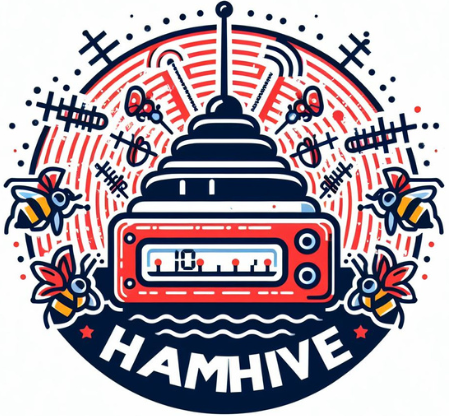 Imagine tuning into frequencies from all over the globe, right from your desktop. That’s the magic of Software-Defined Radio (SDR) \’96 a technology that’s revolutionized how we interact with radio waves. Unlike traditional radios that rely on physical hardware to process signals, SDR uses software to do the heavy lifting.
Imagine tuning into frequencies from all over the globe, right from your desktop. That’s the magic of Software-Defined Radio (SDR) \’96 a technology that’s revolutionized how we interact with radio waves. Unlike traditional radios that rely on physical hardware to process signals, SDR uses software to do the heavy lifting.
SDR isn’t just a niche hobby; it’s gained significant traction with both radio amateurs and professional signal sleuths. Its flexibility and adaptability have made it an invaluable tool for a variety of applications \’96 from emergency communications to space exploration.
What stands out most about SDR is its accessibility. You don’t need a room full of equipment; a simple USB device and your computer are enough to get started. And here’s the kicker: If you’re into listening and not transmitting, there’s no need to jump through the legal hoops of obtaining a license.
This ease of diving into the world of radio without the burden of paperwork or hefty investments is what makes SDR particularly attractive. It’s not just about what you can tune into; it’s also the joy of exploration and the simplicity of the experience.
SDR: A World of Listening Without Licenses
Imagine being able to tune into a wide range of frequencies, catching whispers from across the globe, right from your desk. Software-defined radio makes this a reality, and one of the most attractive aspects of SDR is that it opens a portal to listening without any licensing required. Now, you’re probably wondering, ‘What’s the deal with licenses and why don’t I need one?’
SDR, at least for the listener, falls into a category that requires no transmission of signals, therefore sidestepping the legalities that accompany broadcasting. Radio enthusiasts can indulge in monitoring the airwaves, exploring anything from commercial FM broadcasts to international shortwave communications, without the traditional barriers of entry.
This no-license facet of SDR cannot be overstated. In the past, tapping into the realm of radio waves was often gated by hefty licensing processes, often discouraging the keen amateur from diving in. With SDR, anyone can become part of an ever-widening community of listeners with genuine ease. Simply put, if you’re not transmitting, you’re just an audience to the airwaves, eliminating the need for a license.
The result? A democratization of radio listening. Everyone, from the curious beginner to the seasoned tech enthusiast, can unlock a treasure trove of transmissions. Your geography becomes irrelevant as you explore communications from various corners of the world, and all this is achievable on a shoestring budget. That’s right, accessibility is also a hallmark of SDR, as the cost entry point is far lower than traditional radio equipment.
Before we move on, it’s important to clarify that while you don’t need a license to listen with SDR, the same doesn’t apply if you choose to transmit. For those looking to engage in bi-directional communication, that’s a different story with its own set of rules and regulations. However, for the vast majority who are content with listening, SDR remains a liberating and cost-effective doorway to a global symphony of signals.
Setting Up Your SDR Listening Station
Setting up an SDR listening station is simpler than you might think. You’re going to need a few pieces of equipment and some basic software. First, let’s talk about hardware. The heart of your setup is the SDR receiver. There’s a range of options available, from inexpensive dongles to more sophisticated, wider-band receivers.
When it comes to choosing the right hardware, factor in what frequencies you’re interested in monitoring. If you’re just getting started, an affordable RTL-SDR dongle might be the perfect fit. For those interested in a broader spectrum, you might want to invest a bit more into a receiver with greater capabilities.
Now, let’s move on to the antenna. This is crucial as it’s your system’s ear to the world. Depending on your location and the frequencies you want to listen to, you could start with something as simple as a long wire antenna or purchase a more specific antenna for better reception.
Once you have your hardware sorted out, it’s time to talk software. You’ll find a variety of SDR software, some of which are open-source and others that are commercial. They often come with different features and interfaces, so choose something that resonates with you.
To get everything up and running, you’ll connect your SDR receiver to your computer. Install the software of your choice, and you’re pretty much good to go. The software will allow you to tune into different frequencies, apply various filters, and even record signals.
Remember, you can always adjust your approach down the road. As you dip your toes into the world of SDR, you’ll learn more about what kind of setup works best for you. There’s a lot of opportunity in SDR to customize your experience to match your interests.
Exploring the World Through SDR
I’m here to help you imagine the sheer scale of opportunities that SDR offers. Picture this: you’re sitting comfortably in your home, yet your ears traverse continents, tuning into conversations, music, and news from across the globe. It’s not fantasy; it’s the reality of what a simple antenna and computer setup can grant you.
You’re going to find out about the myriad of broadcast signals that are now within your reach. From the chirps of distant satellites to the buzz of emergency services and beyond, the spectrum is replete with fascinating signals.
And it’s not just about listening—SDR can be a conduit to a global community. I’ve seen firsthand the network of SDR enthusiasts who are always eager to share discoveries, aid in identifying unknown signals, and advance the craft together. There’s a sense of camaraderie borne out of collective curiosity and the pursuit of radio’s secrets.
So, choose something that resonates with you. Are you into jazz? There’s a station in New Orleans waiting for you. Are you a linguaphile? International broadcasts are at your fingertips. With SDR, there are no borders, just frequencies.
Don’t worry too much about not understanding everything at first. Like any new endeavor, there’s a learning curve. But remember, your first attempt doesn’t need to be your last. Start with the familiar and gradually expand your horizons.
I really hope that through SDR, you’ll experience the magic of pulling invisible stories out of thin air. It’s a hobby that constantly rewards the curious and the patient, with each session promising the potential for a new discovery.
SDR isn’t just an entry point into the world of radio; it’s a continually unfolding adventure that requires nothing more than your willingness to listen. So even as our article wraps up, think of it as just the beginning of your SDR journey. The airwaves await—happy listening!

Software-defined Radio (SDR) – Ears To The World! from HamHive. SDR opens up a fascinating world of radio exploration. What are you most interested in exploring with SDR? #HamRadio #SDR
This version keeps the core message but adds a question to spark conversation and engagement.
It includes relevant hashtags to reach a wider audience interested in ham radio and SDR technology.
Thanks Ferdie for the good tips. I always wondered what hashtags did, does it allow you to target a more specific niche? I’m learning everyday and that’s a good thing. That reminds me to do another section tonight on my General license exam. I’m hoping to take the exam sometime this fall. You have a good one!